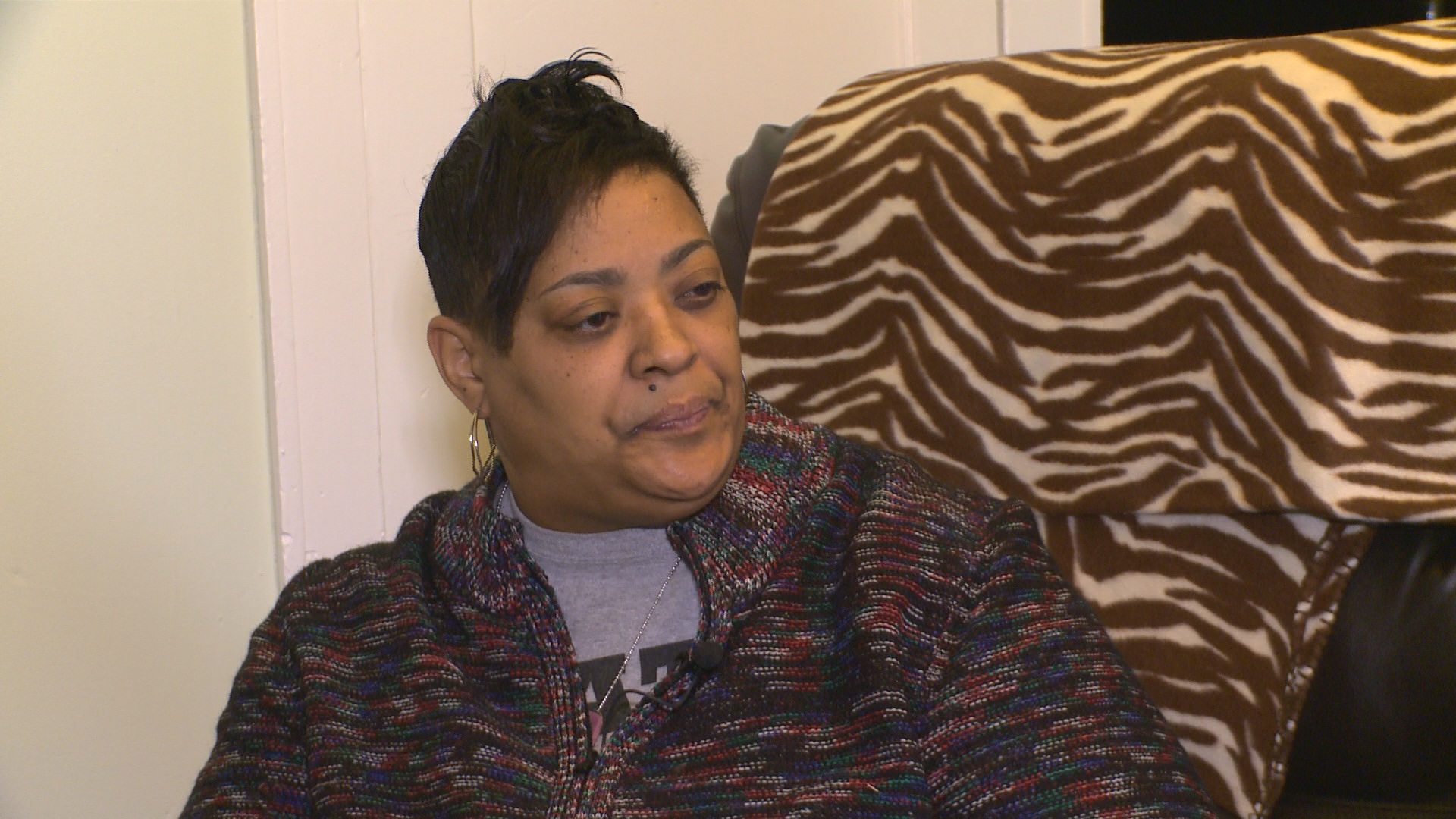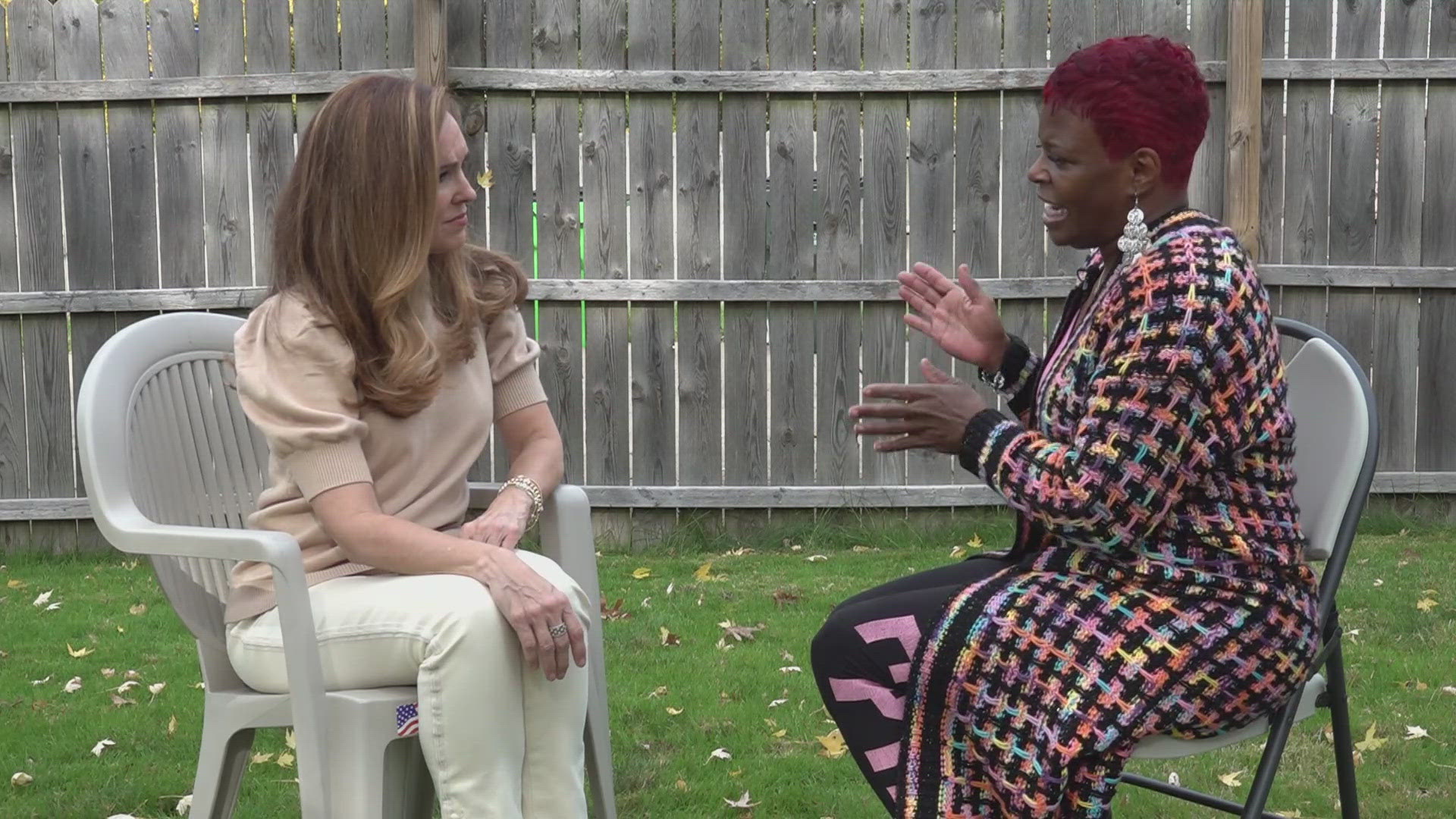Sonya Garth and her daughter Davia never intended to become the faces of Domestic Violence but their story is one of hundreds that tragically explains why the system needs to change in order to save lives.
Sonya loved Rufus Gray, even after the abuse began a year into their relationship.
"I didn't see it 'til the end. Everybody else seen it around me but sometime, you know, your heart wants what the heart wants," Sonya says.
12-year-old Davia loved Rufus too, enough to call him Daddy, even though he wasn't her biological father.
Sonya says he was a doting father and decent husband when he wasn't drinking.
DONATE: Support local shelter
After seven years, and she estimates at least 200 calls to the police department during that time, Sonya had enough. She made Rufus leave the house but he didn't go far.
He moved in four houses down the street where she says he could still watch her.
She changed her cell phone number, blocked his number, changed her locks and bolted her windows, but it never seemed to be enough.
It was October 6, 2015. This time she says Gray threatened to kill her and she believed him.
She pressed charges but police could only hold him for a few days.
Gray did have a court history of domestic violence against Garth and his previous wife. But Garth didn't believe a court order of protection would keep him away.
![SONYA'S STORY: The face of domestic abuse[ID=26494755] ID=26494755](http://bcdownload.gannett.edgesuite.net/wkyc/34306114001/201504/1969/34306114001_4200840508001_4200837756001-th.jpg?pubId=34306114001)
![CHAPTER 1 - The Incident[ID=26454597] ID=26454597](https://presto-wkyc.gannettdigital.com/Portals/_default/Skins/PrestoLegacy/CommonCss/images/embed.jpg)
On October 30, she, Davia and her son Phillip settled in to watch LeBron James' return to the Cavaliers. She looked up and saw her estranged husband standing in the doorway with a gun.
"I said, 'I'll take you back,' he said, 'no, I'm gonna kill you.' and he shot me three times. My daughter jumped up and screamed, 'Mommy!' he missed her head and shot her in the torso," Sonya remembers.
Sonya's son Phillip jumped up and subdued Gray. He got the gun away from him and held him down, giving Garth and Davia time to get out of the house and run to a neighbor for help.
Shortly after, Davia died from the gunshot wound.
Garth keeps the bullet hole that missed Davia's head covered with a cross and hidden by window blinds. In the opposite corner, she has a shrine for the little girl who loved butterflies and the color purple.
"My baby loved to dance, loved to sing, loved to do cartwheels, he stole all of that because I wanted out," Sonya says.
There isn't a moment in every day that goes by that she doesn't think about her daughter and what might have been different.
"I allowed myself to put up with that just to be loved by somebody and it wasn't worth it and, in the end, I paid for it dearly," she says.![CHAPTER 2 - Finding Help[ID=26454983] ID=26454983](https://presto-wkyc.gannettdigital.com/Portals/_default/Skins/PrestoLegacy/CommonCss/images/embed.jpg)
So where does a victim go for help?
The Domestic Violence Child Advocacy Center HelpLine 216.391.HELP receives about 16,000 calls every year. Those calls include women in crisis and those just needing information.
The calls have actually dropped in recent years but web traffic to www.dvcac.org is up and hits on the "safety plan" page are among the most popular.
Domestic Violence crosses every race, culture, ethnicity, religion and socio-economic background. It is not always physical. It can be verbal, emotional and psychological abuse as well.
According to FBI statistics, 95 percent of reported DV is men on women. But if you remove the word "reported," experts say that statistic changes dramatically.
Many believe it may be more like 80/20 because men are reluctant to come forward. DVCAC provides services to about 300 men a year.![DOMESTIC VIOLENCE - FOOTER[ID=25520883] ID=25520883](/Portals/_default/Skins/PrestoLegacy/CommonCss/images/embed.jpg)
DVCAC services, which include the HelpLine, teen dating violence prevention, community education, counseling and shelter, reach 35,000 people annually.
Tim Boehnlein has worked in the field of domestic violence for 22 years. Currently he is the director of Visitation and Court Services.
Last September, Cuyahoga County was one of four communities awarded funding by the U.S. Department of Justice to create a Domestic Violence Homicide Prevention Initiative. The aim is to effectively identify potential victims and monitor high-risk offenders.
The DVHP Initiative is modeled after programs in Massachusetts and Maryland, where the use of coordinated teams of law enforcement, prosecutors, health professionals and victims' services significantly reduced the domestic violence homicide rate. Why is this program needed?
![Domestic Violence by the numbers[ID=26184079] ID=26184079](https://presto-wkyc.gannettdigital.com/Portals/_default/Skins/PrestoLegacy/CommonCss/images/interactive.jpg) "In any given year we can review up to 30 cases of domestic violence homicides," Boehnline says referring to Cuyahoga County alone.
"In any given year we can review up to 30 cases of domestic violence homicides," Boehnline says referring to Cuyahoga County alone.
On behalf of DVCAC, he's working with Cleveland Police and the Witness Victims Services Center to come up with a program they hope to implement by October.
"Domestic Violence high risk team is front line officers and other social service providers who would administer a lethality screening on scene, which is a series of about thirteen questions. Based on the scoring it would be determined if this person was at high risk and danger for lethal domestic violence,"
Questions may include:
- Does the offender have access to weapons?
- Have they ever used a weapon against you?
- Have they ever tried to choke or strangle you?
- Do they have problems with alcohol or substance abuse?
If it's determined the victim is at risk, they would be invited to become part of the program.
"We anticipate that there will be victims who won't answer the questions honestly because they're scared and they know that jail is temporary and we know the criticisms of protection orders that they're just a piece of paper and it's the enforcement of protection orders that is so important," Boehnline says.
FACTS: 5 types of abuse
But every victim, whether they get into the program or not, will receive information about services that can help them. Those in the program will receive enhanced services.
They will have constant information about their case and offender, they'll have help designing a safety plan and they will have access to the entire team connected to their case from beginning to end.
If they have children, they will be able to receive counseling because the cycle of violence is often generational.![CHAPTER 3 - Who is capable of killing?[ID=26455115] ID=26455115](https://presto-wkyc.gannettdigital.com/Portals/_default/Skins/PrestoLegacy/CommonCss/images/embed.jpg)
But how is it possible to identify abusers who are capable of killing?
"They usually have past convictions of domestic violence and there's been a history of strangulation and there's access to weapons and he's used a weapon in the past, he is violent outside of the home as well as inside of the home, there's a number of factors that the research has shown that these people are more likely to commit a domestic violence homicide," Boehnline says.
He adds that there are common characteristics many dangerous domestic violence offenders have including:
- Most are possessive and frequently exhibit jealousy.
- They are masters of manipulation.
- They will convince the victim and everyone else that their violence is somehow reasonable, rational or justified.
They often have above-average levels of anger and hostility but it's important to remember that domestic violence is more about power and control.
"If we can catch them early enough, then we can set a higher bail, increase jail time and argue these things in court to make sure that this person is contained more effectively than a non-high risk domestic violence offender," Boehnline says.![Repeat Offender Graphic -[ID=26171727] ID=26171727](https://presto-wkyc.gannettdigital.com/Portals/_default/Skins/PrestoLegacy/CommonCss/images/embed.jpg)
However, the program will only work if there is collaboration and coordination between every member of the team, including police, social services, prosecutors, jails and probation officers.
DOMESTIC ABUSE: A crime without boundaries
"This high-risk team has the potential to cut across all of those bridges and to make the connection so that we're all playing on the same team so that these victims don't fall through the cracks," Boehnline says.
The program will be rolled out in Cleveland's First and Fifth police districts. There is already a domestic violence project being used in the Second, Third and Fourth districts.
Detectives follow up on domestic violence cases and Witness/Victim advocates are automatically assigned to those cases and the city prosecutor's office has a dedicated group of prosecutor's to handle those cases.
It began as a pilot project but hasn't been expanded. That's why this new program is going into the districts that don't have access.
The entire process is being monitored and evaluated by the National Institute of Justice. Evaluators were chosen from Yale and Michigan State to monitor the four chosen sites.
Local evaluators are from Case Western Reserve University and Cleveland State University. They are also acting as research partners.
"This whole process is being evaluated from start to finish because they want to make sure that we are implementing this high risk team model to fidelity so that they can then replicate it across the country," Boehnline says.![CHAPTER 4 - Davia[ID=26457097] ID=26457097](/Portals/_default/Skins/PrestoLegacy/CommonCss/images/embed.jpg)
Rufus Gray's trial is set to start in September, nearly a year after Sonya Garth's life was changed dramatically.
![Davia[ID=26458343] ID=26458343](http://www.gannett-cdn.com/-mm-/aac22ce6426cd2f155fd51c5dacad34de3dcb375/c=242-0-1678-1080&r=115x86/local/-/media/2015/04/27/WKYC/WKYC/635657373535727880-Davia.jpg) She believes God saved her for a reason and she doesn't want another victim to live through the type of pain she's endured.
She believes God saved her for a reason and she doesn't want another victim to live through the type of pain she's endured.
"I think he saved me to help women with domestic violence, should no woman have to lose their child because they want out," Garth says.
She is looking to support legislation that would aid victims of domestic violence and hopes to call it "Davia's Law."


